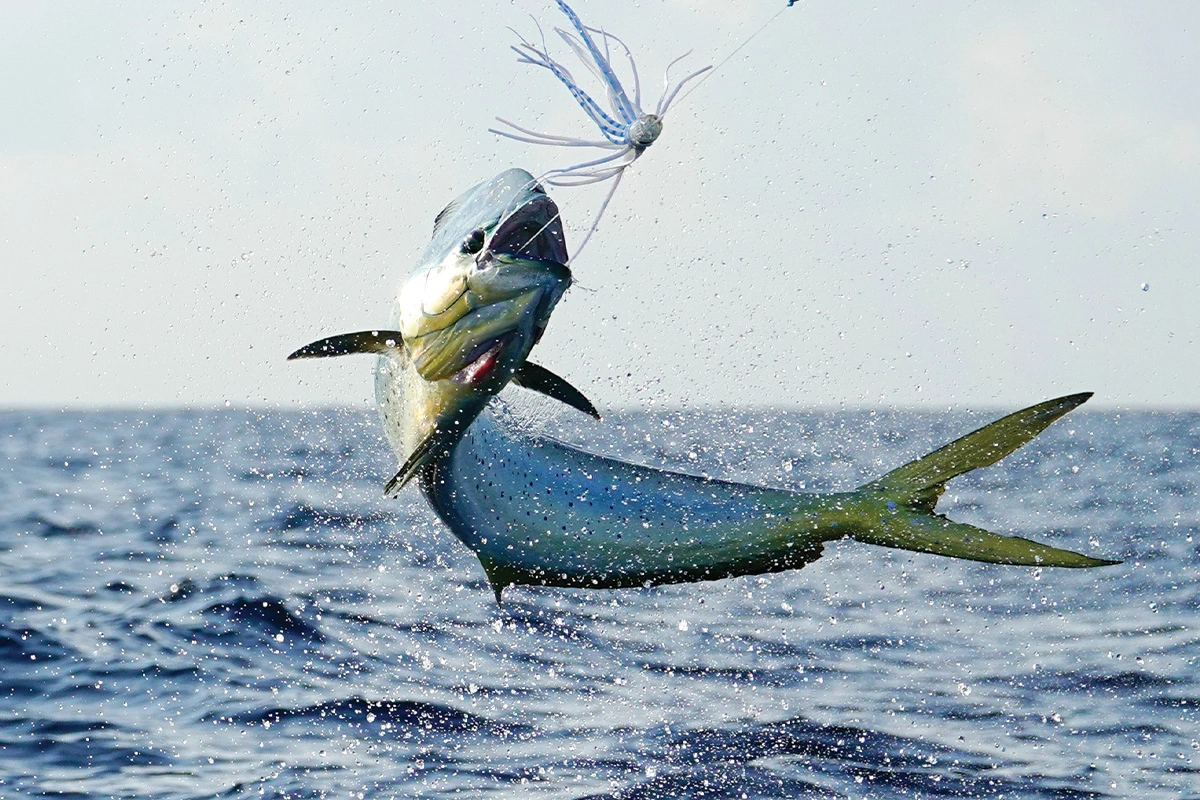How to Find Pelagic Fish
 February 28, 2024
February 28, 2024
Fishing for pelagics often seems like a shot in the dark. They live in the waters off the continental shelf, where depths can reach more than 600 feet. Without the typical visual orientations used in nearshore fishing, like shorelines, bridges, docks, or oyster beds, it often seems like the pursuit of pelagic fish is an aimless hunt.
That being said, there is nothing more exciting than being mid-conversation with a trolling spread out and hearing a line rip out of the outrigger clip, the drag scream, and the captain shouts, "Left short!" or suddenly watching a marlin bill appear harassing your teasers. Game on.
Pelagic fish provide anglers with some of the most exciting and intense experiences. The preparation and pursuit of these species are addicting and ever-changing.
While it is still a hunt, paying attention to surface conditions, bottom features, and barometric pressure will result in hooking up with more pelagic fish like marlin, wahoo, sailfish, tuna, and mahi-mahi.
Surface Conditions
Pelagics are constantly moving in search of food and comfortable water to occupy. With such a vast playing field for potentially suitable habitats, your eyes can be a valuable asset. One of the most important things to do while searching for fish is to pay attention to surface conditions or visual indicators.
Make sure to be on the lookout for bait spraying, which indicates they've been balled up by a predator, flying fish jumping, or your targeted species breaking the surface in pursuit of prey.
If you can't see splashing or fish jumping, look for areas of water that look to be shaking, called "nervous water." Nervous water can indicate the start of a bait ball being formed or bait being pushed to the surface by a pelagic species.
Birds and signs of life are also great things to locate near the water's surface. The birds are looking for the bait, and if you find the birds diving or hovering, chances are you've found the bait. Frigates, shearwaters, cormorants, boobies, and terns are some of the most important bird species to look for on the water.
Searching for pods of dolphins or porpoises, whales, manta rays, or large sea turtles can bring you toward your targeted species.
Other surface conditions to seek out are tide lines or "change" lines that indicate a change in current, water temperature, and salinity. Also, keep an eye out for floating grass mats and drifting debris. These floating structures surprisingly create ecosystems where baitfish call home.
Bottom Features and Structure
Luckily, with technological advances, we don't have to rely solely on our eyesight to locate fish. Utilizing charts and electronics to key in on favorable features below the surface is an excellent way to find pelagic fish.
Reefs, shipwrecks, and rock piles are perfect structures to locate. These structures provide a home for baitfish to protect themselves and feed on plankton and micronutrients that sweep past in the current. Naturally, if the bait is there, then the predators will follow. The structure acts as a current break for predatory fish to ambush prey. Additionally, it creates eddies that drive baitfish away and into the mouths of patrolling pelagic species.
In addition to looking for live or artificial structures, searching bottom features that intersect or divert current such as ledges, humps, sea mounts, or canyons, is crucial to hunting down pelagics. These features provide a staging place for pelagics to greet baitfish, but the variation in depth and current drives nutrient-dense water from the depths up to the surface, causing a feeding frenzy for the entire food chain.
Barometric Pressure
Understanding and monitoring barometric pressure is another factor that can lead to successfully finding active pelagic fish. Barometric pressure measures the weight or force exerted by the atmosphere. Since fish have swim bladders, barometric pressure can affect their location in the water column and how actively they feed.
A general rule of thumb is that increasing pressure will cause the fish to be less active and seek deeper water to gain some relief. Falling barometric pressure will result in feeding activity and fish seeking shallower water. Stable barometric pressure will find the fish in a steady or typical pattern. Remember, falling pressure tends to mean degradation in weather, so keep an eye on the weather forecasts.
Conclusion
Pelagic fish provide anglers with some of the most exciting and intense experiences. The preparation and pursuit of these species are addicting and ever-changing. Understanding how to assess surface conditions, bottom features, and barometric pressure allows you to plan and adapt to find pelagic fish away from the crowds.
